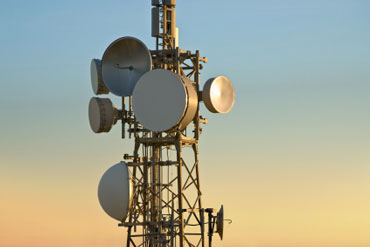November 15, 2017
A WLAN site survey, or an RF site survey, is a fundamental tool for the purpose of designing or troubleshooting a wireless local area network.
Understanding the RF environment in the WLAN location is critical to a successful deployment. Radio frequency (RF) waves are three dimensional so planning must take into consideration the floors above and below as well as walls and other reflective and absorbing surfaces. A simple analogy refers to a balloon floating around an office that bounces off closed doors or file cabinets and other items as it eventually weakens and drifts down a stair case. Using an uncomplicated coverage formula such as access points per user device or per square foot coverage does not take into account the numerous possible RF challenges.
The survey begins with a site visit to test for existing RF signal strength and signal-to-noise ratios, and to identify optimum installation locations for access points (APs). This requires analysis of building floor plans, inspection of the facility, and use of site survey tools. An experienced RF engineer continues to evaluate the RF environment beyond the walls. As previously stated the RF signals are three dimensional, therefore residual RF waves may interfere from an adjacent deployment. Co-channel interference, coverage (lack thereof or overlap), and/or rogue access points are all typical of a poor WLAN design.
Although a final recommended solution starts with a wireless site survey, it also includes interviews with IT management to understand other design parameters such as security, current and projected number of devices, application data requirements, QoS, and anticipated changes to the physical layout.
A good site survey can save the customer money since a proper design based on all the considerations noted will prevent the over deployment of APs and the attendant unnecessary costs. Over deployment is as much a problem to a healthy working WLAN as too few APs.
A site survey is a temporary view. It's a snapshot in time and will need to be reviewed and updated over time. Even with excellent planning and an initial successful deployment, over time RF interference, propagation, capacity and coverage changes as new software/hardware is rolled out in user devices. The WLAN site survey, once again, will help validate or troubleshoot when performance suffers.
Whatever your goal, the information discovered and interpreted by an experienced RF engineer is invaluable to the ongoing activities of WLAN planning, deployment and support.
For RF planning and professional services contact Direct Network Services: info@directnetserv.com or 978-952-6000.
